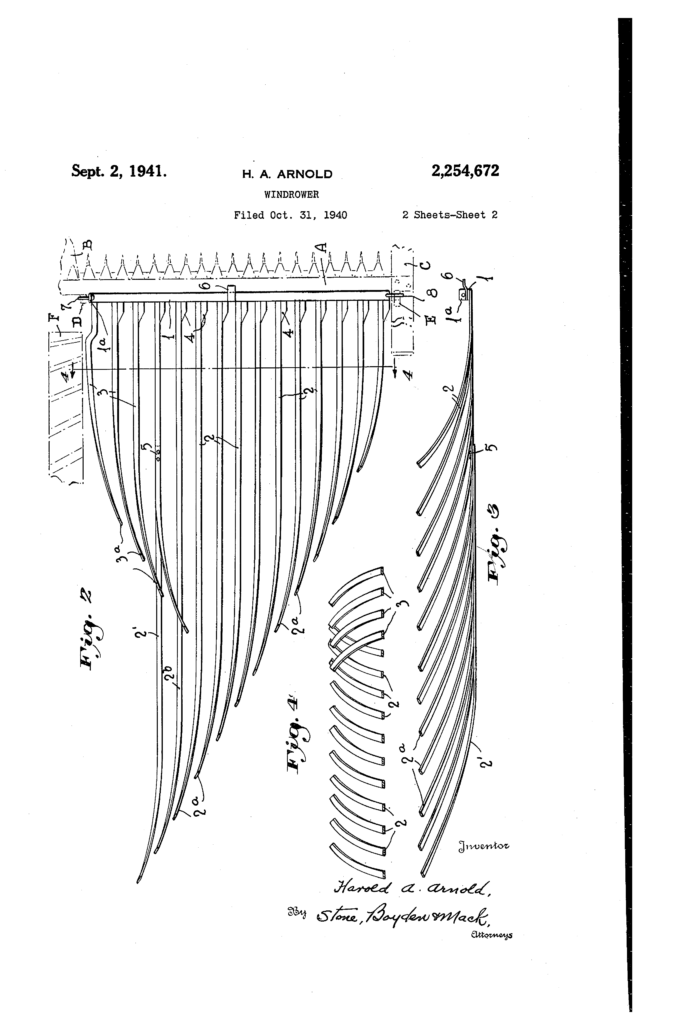Let’s take a trip back to 1927, a pivotal year in agricultural innovation when Harold A. Arnold, a researcher and instructor at the College of Agricultural Engineering, embarked on a groundbreaking journey to enhance harvesting technology. His pioneering work on windrowers, which culminated in a patented design in 1941, revolutionized the way farmers harvest hay and grain, marking a significant advancement in agricultural machinery.
The Genesis of Innovation:
Harold A. Arnold’s vision for the windrower began in the late 1920s, a time when agricultural practices were ripe for innovation. As a researcher deeply embedded in the field of agricultural engineering, Arnold identified a critical need for more efficient harvesting equipment. His dedication and ingenuity led to the development of a new type of windrower, designed to improve the efficiency and effectiveness of harvesting processes.

The Breakthrough Design:
Arnold’s windrower design, patented in 1941, introduced several key innovations that set it apart from existing models:
- Curved Slats with Unequal Widths: The heart of Arnold’s design lay in its use of two sets of curved slats with unequal widths. This ingenious configuration allowed the windrower to collect hay and grain more effectively, ensuring that all material was gathered rather than leaving behind valuable crops. By optimizing the collection mechanism, Arnold’s windrower minimized waste and maximized yield.
- Enhanced Delivery Mechanism: Another significant improvement was the design’s ability to deliver the harvested material far enough to the side of a “tricycle-type tractor.” This feature prevented the harvested material from interfering with the tractor’s wheels, thereby ensuring a smoother and more efficient harvesting process. By addressing common operational challenges, Arnold’s design made the task of harvesting much more manageable and effective.
Legacy and Impact:
Harold A. Arnold’s windrower patent represents a milestone in agricultural technology. His innovative approach not only advanced the efficiency of harvesting equipment but also set a standard for future developments in the field. The design’s practical benefits—improved collection efficiency and smoother operation—have had a lasting impact on agricultural practices, reflecting Arnold’s enduring legacy in agricultural engineering.
Arnold’s contributions have not only transformed the way we harvest crops but also paved the way for continued innovation in agriculture. Here’s to the spirit of innovation that drives progress and to the pioneers like Arnold who have made a lasting difference in the world of farming!